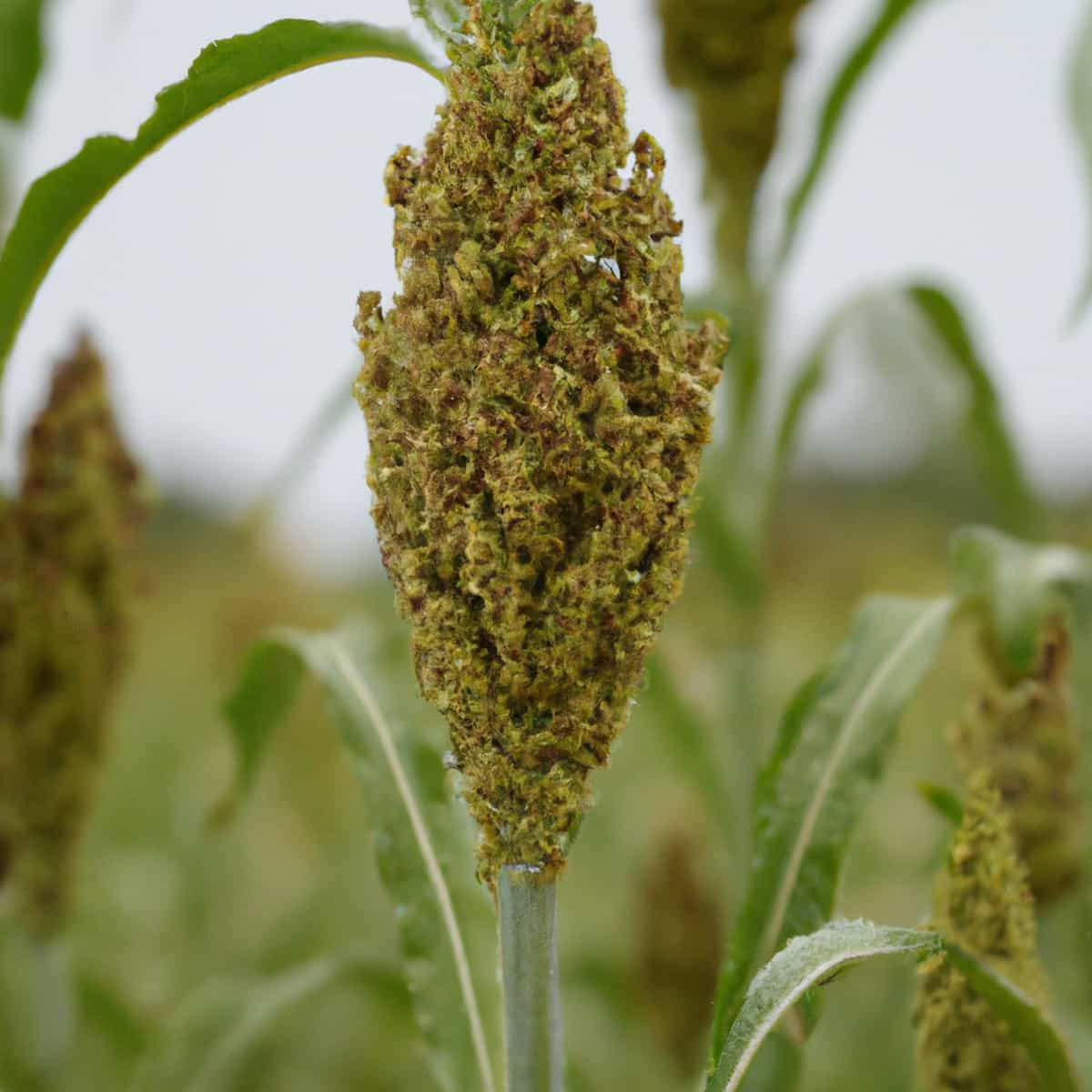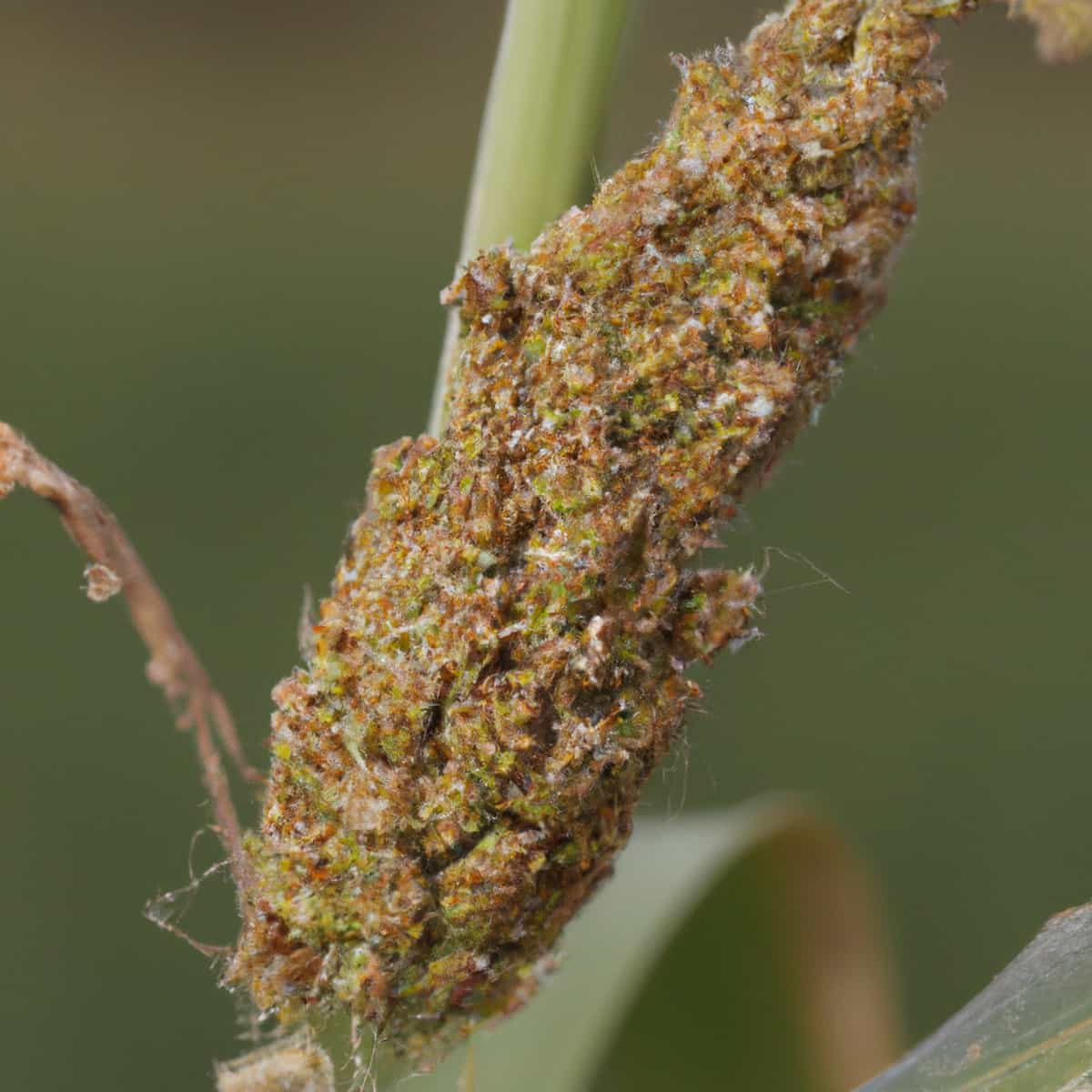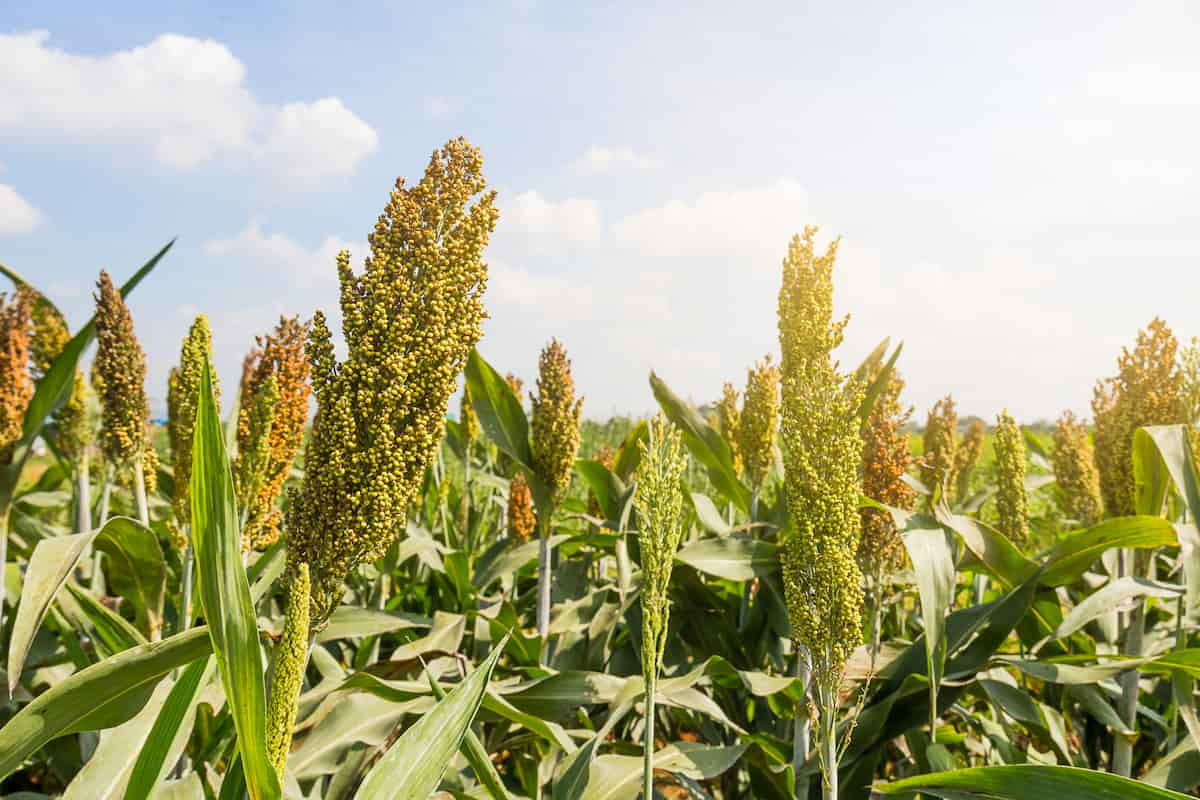Sorghum ergot, or sugary disease, is a fungal disease of sorghum plants, causing significant global losses. It is a major problem in sorghum production worldwide in many tropical and subtropical regions. To prevent and manage this disease, sorghum producers must understand the disease cycle, its environmental interaction, and risk factors.

Farmers should practice crop rotation and deep plowing and use certified and disease-free seeds to prevent the spread of the disease. This article will provide an overview of sorghum ergot or sugary disease, including its symptoms, biology, and control.
Ergot or Sugary Management in Sorghum
The Causal Organism of Sorghum Ergot or Sugary Disease
- Sphacelia sorghi cause the ergot disease in sorghum. It will develop septate or compartmentalized mycelium.
- The honeydew is a bunch or a tuft of suspended conidia that are uni-cellular, transparent, elliptical, or oblong.
The Disease Cycle of Sorghum Ergot or Sugary Disease
The disease cycle of the Sorghum Ergot, or Sugary Disease starts with the production of asexual spores called conidia, spread by wind and water. These conidia come into contact with the sorghum plant’s flowering head and germinate, forming a haustorium. This haustorium penetrates the flower’s ovary and forms a structure called a sclerotium, the overwintering stage of the fungus.
In the spring, the sclerotia produce sexual spores called ascospores. These ascospores are spread by wind and can infect other sorghum plants, initiating new disease cycles. The ascospores penetrate the ovaries of the flowers, where they germinate and form a structure known as an ascogenous hypha. This hypha then produces conidia, which spread by wind and water and infect other sorghum plants.
The conidia germinate on the surface of the sorghum plant, producing structures called stromata. These stromata are the structures responsible for producing the ergot bodies, which are black and hard, and contain the fungal spores. The ergot bodies are spread by animals or rain splashes to other plants.
Mode of Spread And Survival of the Pathogen In Sorghum Crop
- The sclerotia of the fungus can survive in the soil for many years, making the disease difficult to control.
- The primary means of disseminating the disease is ascospores that emerge out of sclerotia after its germination, infecting the ovary of the flowers.
- The secondary means of spread is via wind and conidia carried by insects. The rain splashes and infected seed heads contaminating healthy seed heads are other sources of disease spread.
In case you missed it: Stem Borer Management in Maize: Symptoms, Treatment, Chemical, Biological, Natural, and Organic Control

Causes / Conditions Favourable for Sorghum Ergot or Sugary Disease Spread in the field.
- High Rainfall & Humidity – High rainfall and humidity can spread the disease during the flowering period.
- Temperature – Cooler temperatures at night will amplify the disease intensity.
- Weather – Cloudy weather conditions will also increase the intensity of the disease incidence.
Symptoms of Sorghum Ergot or Sugary Disease
- Symptoms of this disease include stunted growth, discolored panicles (flower heads), and reduced grain production. Dark brown lesions characterize the disease on the seed heads of the plant. In severe cases, the plant may die. The disease is limited to individual spikelets.
- The most common symptom is discolored panicles. The panicles on infected plants may appear white or grayish-pink in color and have a sugary texture. It is due to the fungus producing a sugary exudate/honeydew. The panicles may also be withered and deformed. Cerebella sorghivulgaris frequently colonizes the sugary exudate, giving the head a darkened complexion.
- Stunted growth is another symptom. Infected plants may be shorter and smaller than healthy plants and have fewer leaves. The leaves may be discolored or have dead spots.
- Finally, reduced grain production, the infected panicles may produce fewer grains than normal, and the grains produced may be smaller and of lower quality.
- In addition to these symptoms, the fungus may also cause the roots of infected plants to become infected.
Percentage of Yield Loss Due to Sorghum Ergot or Sugary Disease in Sorghum Crop
- Ergot or Sugary Disease in Sorghum can cause losses of up to 90% globally.
- An infected crop yields at least 20-50% yield loss.
Diagnosis of Sorghum Ergot or Sugary Disease in Sorghum crop
- To diagnose Sorghum ergot, the plants should be visually inspected. If sclerotia are present, they can be collected and examined under a microscope to confirm the presence of the fungal fruiting bodies.
- Additionally, a laboratory test can be conducted to identify the fungal species causing the infection.
Cultural Control Measures of Sorghum Ergot or Sugary Disease
- To be successful, cultural control should be implemented before the disease appears in the crop.
- Sanitation: Removing crop residue from the field after harvest reduces the risk of disease, as it reduces the number of spores that can remain in the field.
- Crop Rotation: Rotating sorghum with other crops such as maize, millet, cowpea, or soybean reduces the risk of disease by reducing the number of spores in the soil.
- Planting Time: Planting sorghum as early as possible in the season also reduces the risk of disease, as the cooler temperatures and shorter days reduce the number of spores in the air.
- Sowing Date: Sow the crop in such a time the crop does not come to the flowering stage during September- October when high rainfall and high humidity favor the disease.
- Resistant Varieties: Planting resistant varieties can reduce the risk of disease and minimize the need for chemical control.
- Roguing Out: Destruction and burning of infected plants are necessary to prevent the spread of this disease.
In case you missed it: Corn Earworm Management in Maize: Symptoms, Treatment, Chemical, Biological, Natural, and Organic Control

Biological Control Measures of Sorghum Ergot or Sugary Disease
- Biological control of sorghum ergot or sugary disease is an effective and environmentally friendly approach for controlling this destructive disease.
- Natural enemies, such as the entomopathogenic fungus Beauveria bassiana, can be used to disrupt the life cycle of the ergot fungus.
- In addition to Beauveria bassiana, other biological control agents have been identified and are being investigated for their potential to control sorghum ergot. These include the fungi Gliocladium virens, Trichoderma harzianum, and Penicillium chrysogenum, as well as the bacterium Bacillus subtilis.
Chemical Control Measures of Sorghum Ergot or Sugary Disease
- Seed Treatment – Treating seeds with fungicides before planting will kill any spores that come in contact with the seed. Some commonly used fungicides are Thiram, Fluazinam, Metalaxyl, Captan, Propiconazole
- Spray application of fungicides like Mancozeb at 2 kg/ha or Carbendazim at 500 grams/ha at 5-10% flowering stage (emergence of ear heads), 50% flowering stage, and repeat the same a week later.
Preventive Measures for Control of Sorghum Ergot or Sugary Disease
- Hand-weeding and shallow tillage can help to reduce the number of ergot spores in the soil. Hand-weeding helps to remove the infected plants, while shallow tillage helps to break up the soil and expose the fungus to the air. Keeping the field free of weeds and other plant debris can also help reduce the disease’s incidence.
- Fungicides should be applied before flowering to reduce the number of ergot spores that can infect the crop.
- Harvesting the crop as soon as possible after flowering and drying it in the sun can help reduce the disease’s incidence. It will help reduce the amount of time the fungus has to infect the crop.
- These preventive measures can help reduce the incidence of sorghum ergot or sugary disease and help ensure high crop yields and quality.
Conclusion
Sorghum Ergot, or Sugary Disease, is a serious problem in sorghum production, a major staple crop in Africa, Asia, and Latin America. It can cause a wide range of issues, including yield loss, discoloration, and poor quality of the grain. The best way to protect against this issue is to practice good crop rotation and sanitation practices and use fungicides if necessary. Additionally, it is important to monitor the presence of ergot in the harvested grain.
- Beneficial Insects in Pest Management
- Natural Solutions for Pest Control in Flower Gardens
- Types of Fungicides Used in Agriculture
- Common Issues in the Fruit Development Stage of Pomegranate Farming
- Fruit Development Issues in Papaya: Easy Solutions and Treatment
- Soil-Borne Diseases and How to Protect Your Plants
- Practices to Prevent Disease Spread in the Garden
- From Wilted to Thriving: How to Treat Root Rot Naturally in Houseplants
- Natural Remedies to Cure Brown Spots on Fig Tree Leaves
\